Yellowstone National Park, WY, June 2025
(If you want to skip the sad camera lament, feel free to skip to the pictures.)
Rant
This is the tale of the third trip out. This trip was not a complete disaster, but the pictures from the Canon EOS R7 are less often properly focused than the Canon EOS T7i. There are a few reasons for this, but first a little bit about digital cameras.
The older cameras were Single-Lens Reflex followed by Digital Single-Lens Reflex. The main difference for digital is that the film of the SLR is replaced by a digital light sensor that writes to a memory card in a DSLR. The view finder is fed light by a mirror/prism arrangement. The photographer views a portion of the light directed towards the sensor/film. When you take a picture, the mirror flips up out of the way, exposes the film/sensor, and drops back down.
The newer cameras are largely “mirrorless”, and as expected, a “mirrorless” camera has no mirror. The data captured by the sensor is fed to a tiny screen that the photographer looks at through the view finder. This is good and bad. On the good side, you see a picture closer to what the camera will photograph. If it is dark and you turn the sensitivity up, you have a night-vision device. With the SLR cameras, it just looks dark. You can also display menus, zoom, etc. in the view finder. On the bad side, it takes extra power to do this, and it slightly lags the real world. You can get a bit sick looking through it too long moving the camera around.
Back to focusing issues. Since the sensor of the T7i is covered by a mirror during focusing, the camera has special purpose focus points that you can assign to be used or not. John used “Single-Point Auto-Focus” assigned to the central AF point. This allows for very tight selection of what you focus on (e.g., the animals eye). You get the camera focused, meter the highlights, recompose the picture, and take the picture. Lather, Rinse, Repeat. It does not matter if the subject is close or far. The only real issue is small, close, and fast moving (e.g., swallows and swifts.) Mirrorless cameras do not work this way.
- Mirrorless cameras have the sensor exposed, so they do not need AF points. They use the entire sensor to focus, so the user has to select which area of the sensor to use for focusing. The “Single-Point Auto-Focus” setting of the R7 uses what is at least a 9×9 grid of what used to be an AF point. It might be even larger. The “new” “Single-Point Auto-Focus” is called “Spot Auto-Focus”. Whoever opted for those names should be fired. The “Spot Auto-Focus” seems to still be a larger area than the old “Single-Point Auto-Focus”.
- Mirrorless cameras have advanced in technology to “help” you take a picture. There is people/animal/vehicle tracking. There is eye detection. There is digital image improvements. The problem is that all of these things have limitations and caveats.
- Tracking might not track the thing you want it to, so you have to be fast to swap to the other thing by pressing buttons and/or a tiny joystick.
- Eye detection works great when there is one subject that dominates the image. You have multiple subjects? Your subject if far away? Well, just expect a blurry image.
- Digital enhancement seemed to make the image blurrier.
- If the subject is not at the AF point, the camera likes to focus from zero to infinity and back looking for the subject. This makes it impossible to see the subject to get it back in focus.
- On top of all this, the reviews of the R7 were fantastic, but they might have been paid reviews. Researching specific issues is revealing the the R7 is a great camera, but the auto-focus is a bit weak and struggles with low light and low contrast.
This is going to take more research and testing. It will probably require a different approach to taking pictures. It may require swapping between pre-defined settings based on whether the subject is a landscape or animal, whether it is close or far, and whether there are one or many subjects. It might be a bit until the pictures from the R7 are as good as the T7i.
One thing the R7 has that the T7i does not, is more pixels and an 800mm lens. Even if the focus is a little soft, the subject will be about 2x larger and 6x more pixels.
Stuff You are interested in
Since the morning, the light had turned to utter rubbish. It was bright sunlight through clouds reflecting on the water. Anything in or near the water was backlit 360 degrees. The day was not getting better for John.
For the third trip, the goal was to test One-Shot Auto-focus. This is where the camera focuses once, but does not keep trying to focus as the object moves. John also removed the digital enhancement setting and later the UV filter on the lens.
We went back out to Hayden Valley to the same creek with the baby ducks. (Yes, baby ducks. Hold your horses, that will be Part 3.) We pulled into the pull-off, and John started to get out with the camera with the “Big White Lens”. As soon as he stepped out with the lens, a car coming the other way put their blinker on and whipped over into the pull-off. John walked across the street and set up the tripod to take pictures of a duck near the shore. The lady in the other car thundered over like an enraged Bison and scared the duck away. She whipped out her binoculars, we guess, trying to find what brought out a “Big White Lens”. She then whipped up her camera to take pictures because there must be something good, so we just left.
We went further up the road, but nothing interesting was there. John did what he could, but the subjects were far away. badly backlit, and/or fast moving. (He missed a decent picture of a Swainson’s Hawk due to the vastly different camera mechanics.)
We headed back towards the creek with the ducks. The enraged Bison lady was gone, and the ducks were back. We saw three male and one female Green-winged Teal ducks this time, but no babies. There was also a Mallard and some Lesser Scaups. Most of the photos in this page are cropped to 75%, which is still 50% more pixels than John’s original Canon XSi.
We saw a Mallard having a bad hair day. If you zoom into the original, you can see the eye is just barely out of focus.
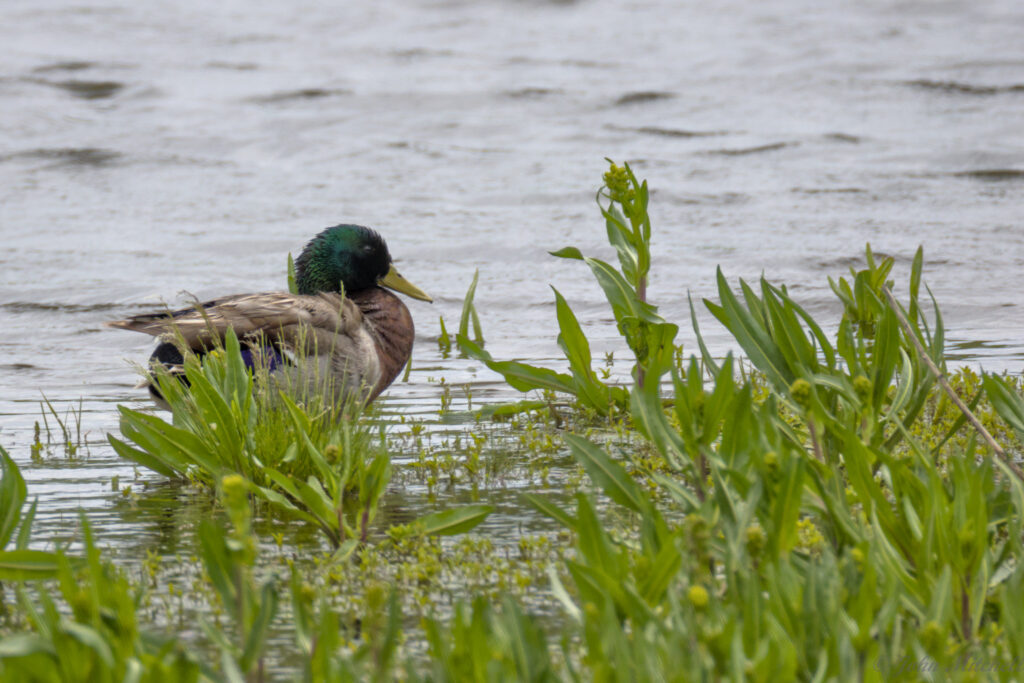
John, finally, took a decent picture of some Lesser Scaups. (Or Scaups of Indeterminate Greatness, as they prefer to be called.)
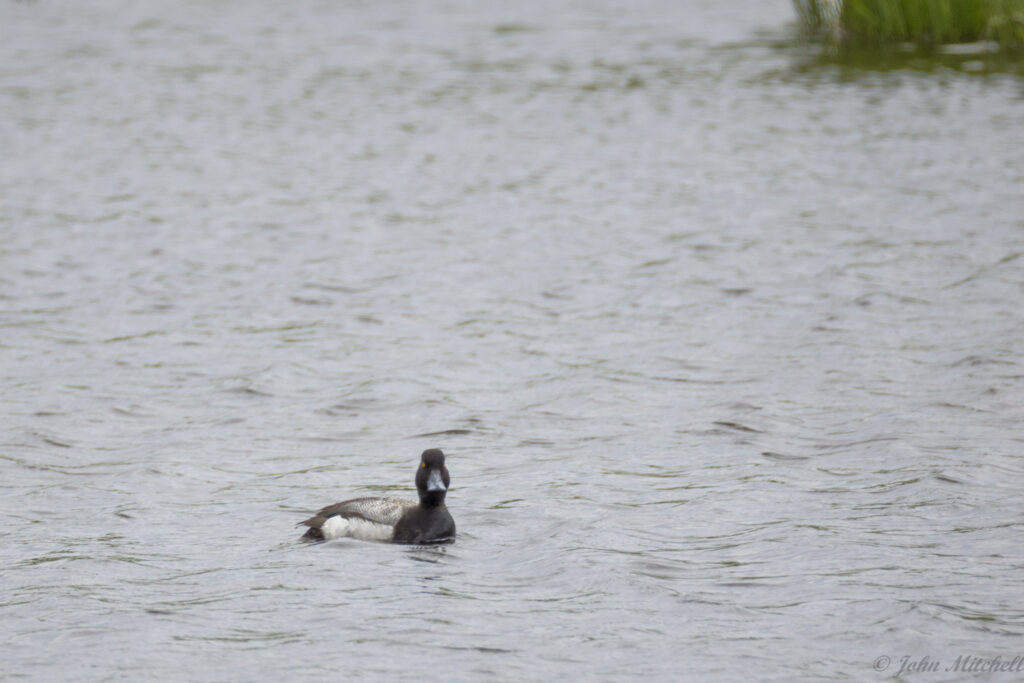
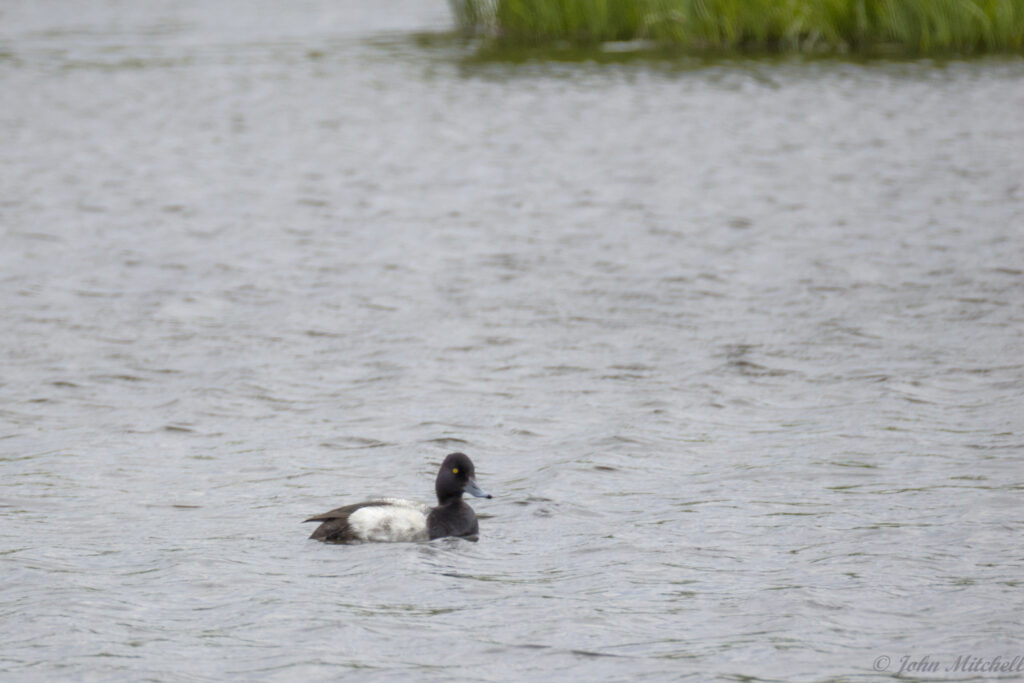
Next, the Green-winged Teals showed up. John started off taking pictures with the 200-800mm lens. Depending on the light, their green iridescent wing spot can look blue. They have rust colored heads, with iridescent green eye patches, and rust colored Mohawks. One is missing a chunk of feathers on the back of his head. John is not sure if this is a camera anomaly, and injury, or molting.

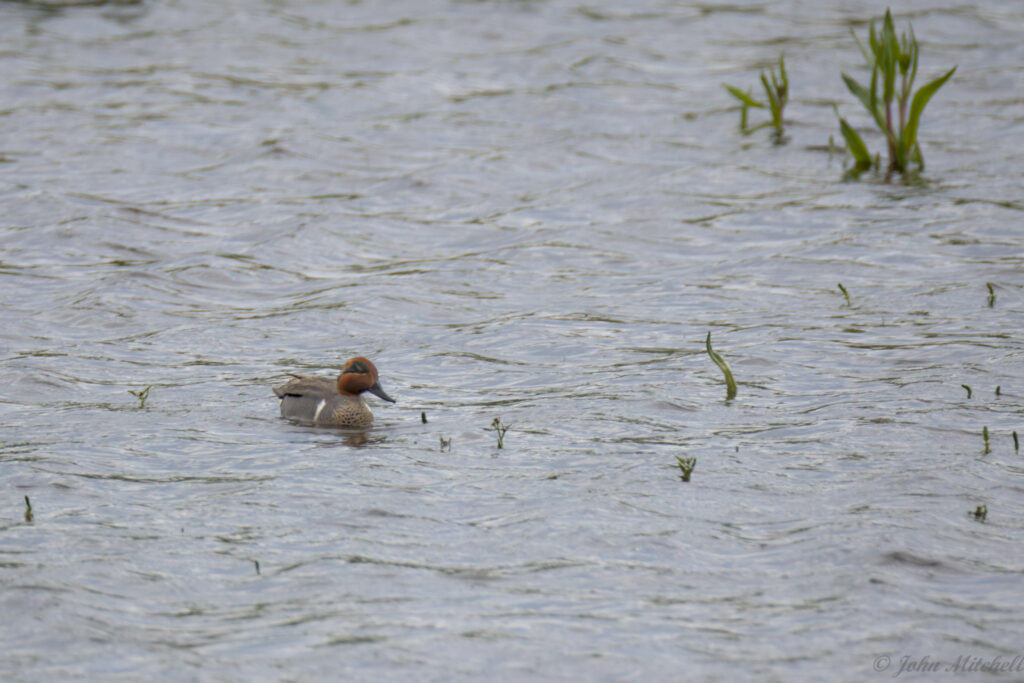
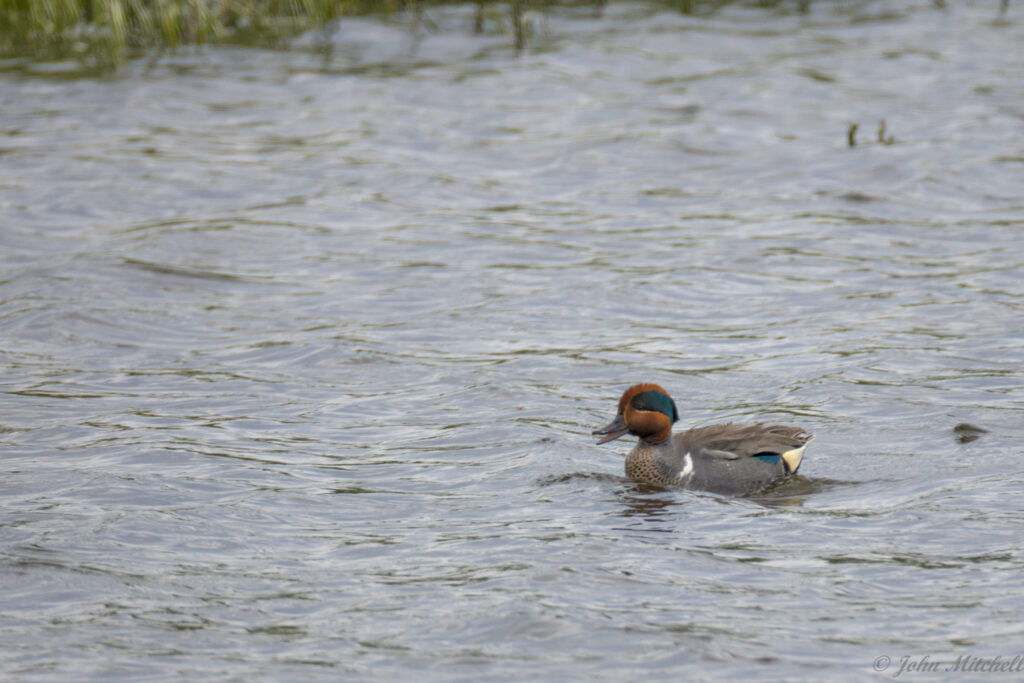
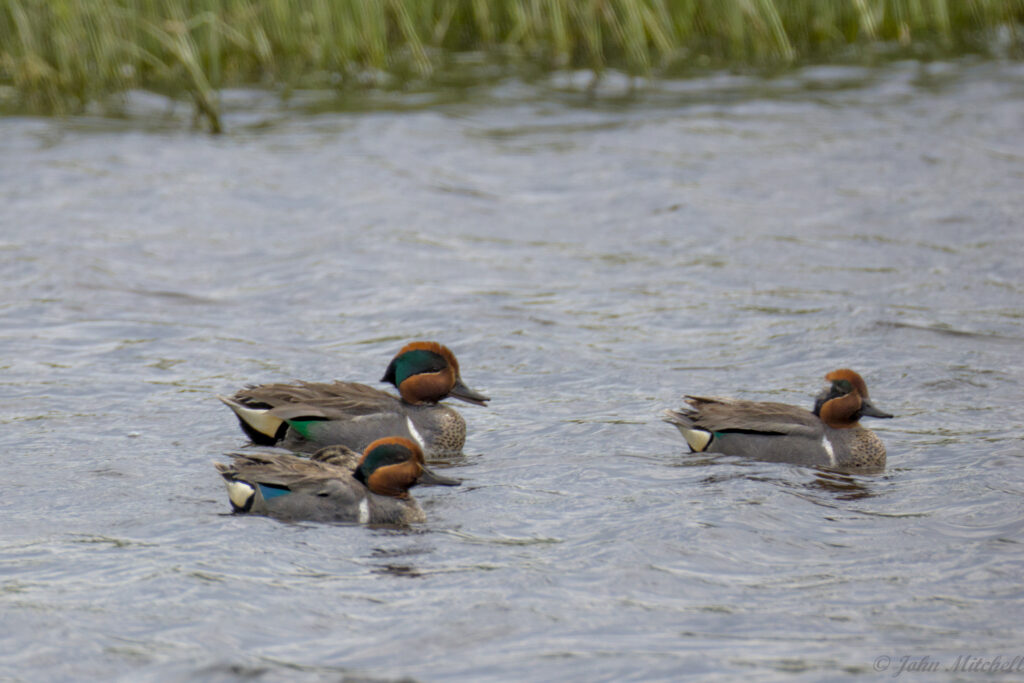
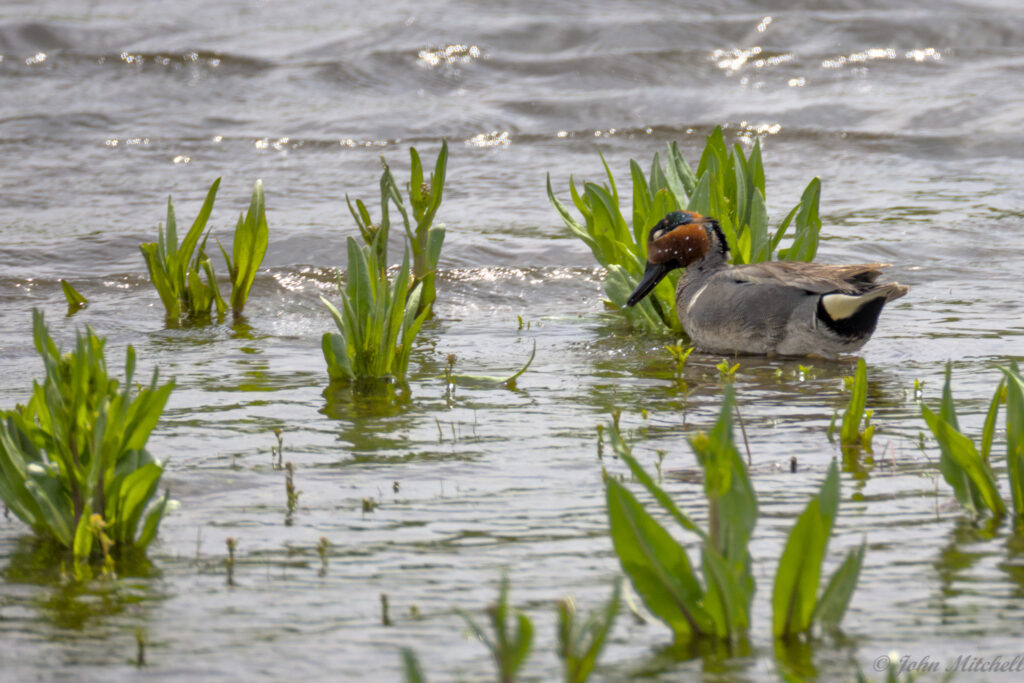
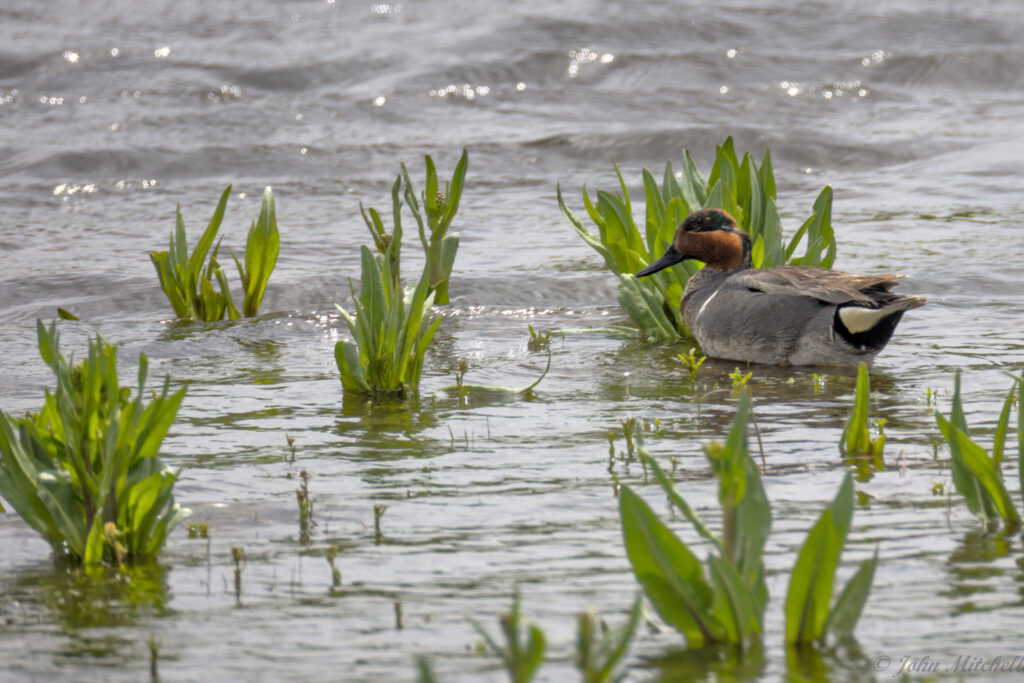
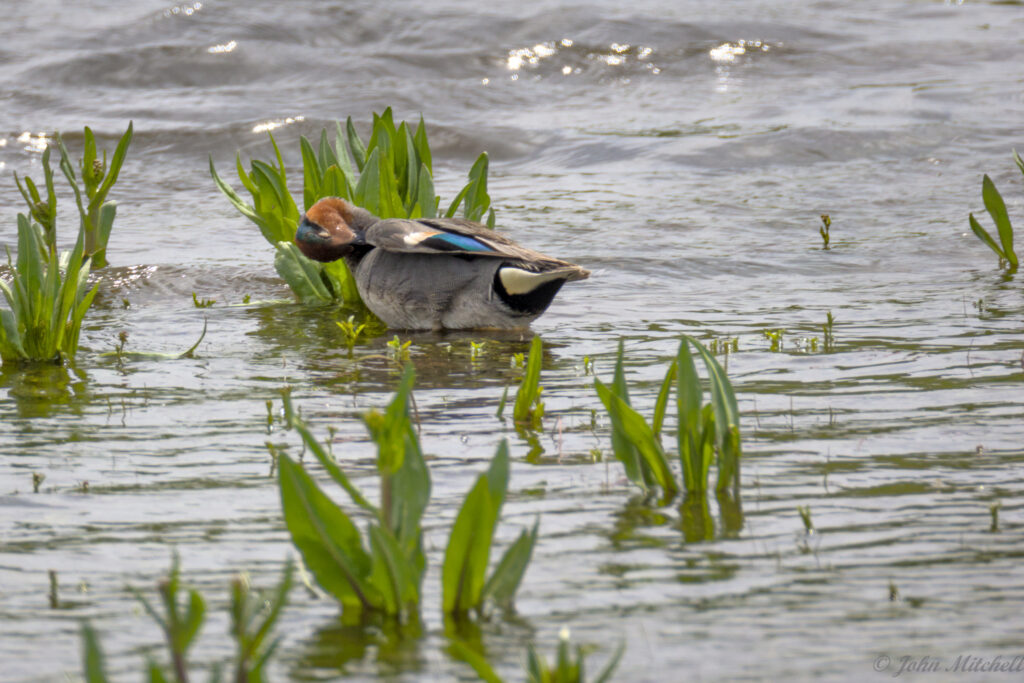
John switched to the L 100-400mm lens that was focusing so well for the T7i camera. Sadly, it did not do much better. This suggested that the camera might be the issue.
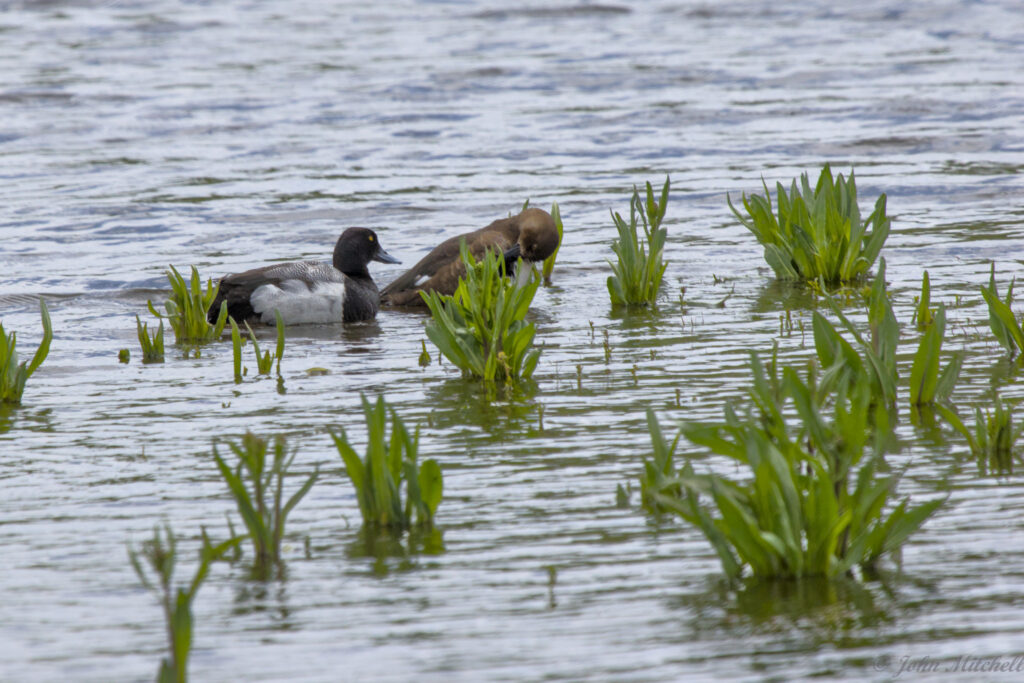
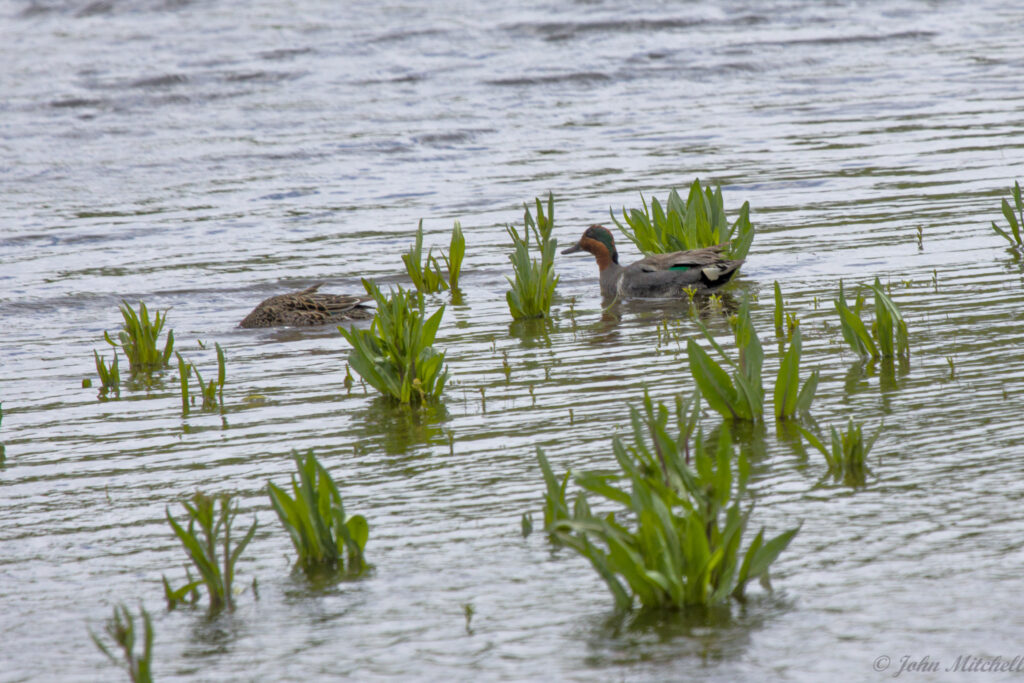
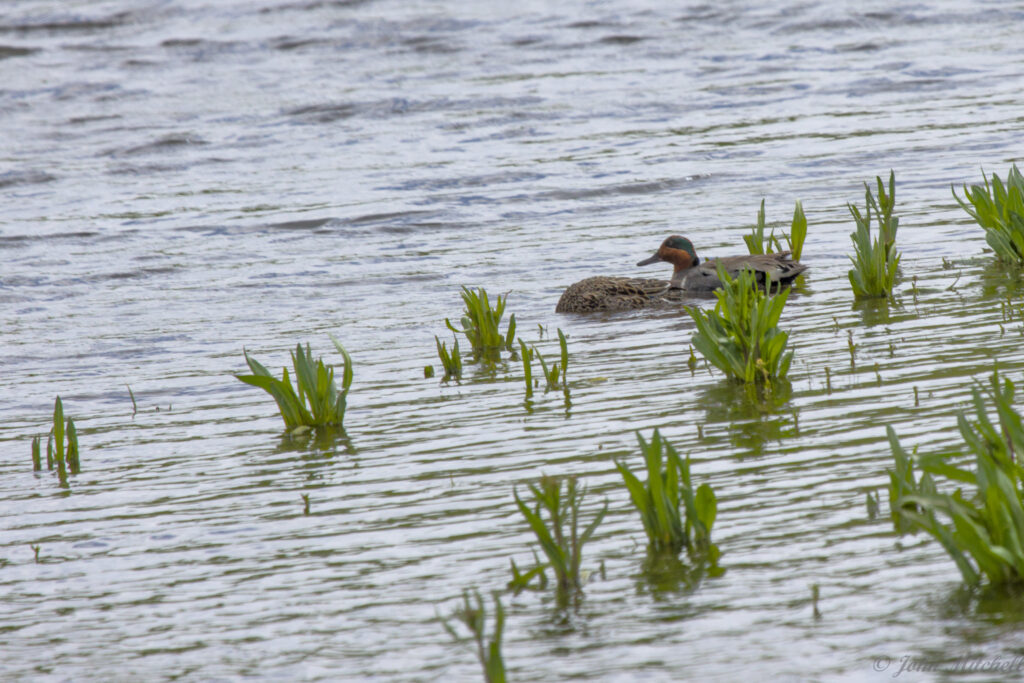
And back to the 200-800mm lens.
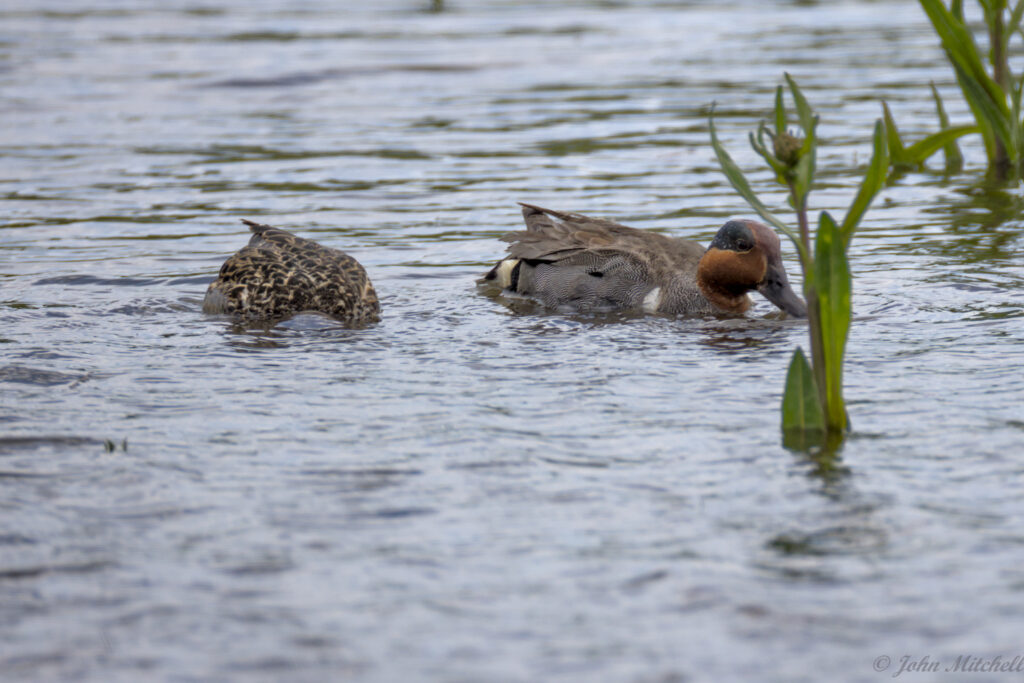
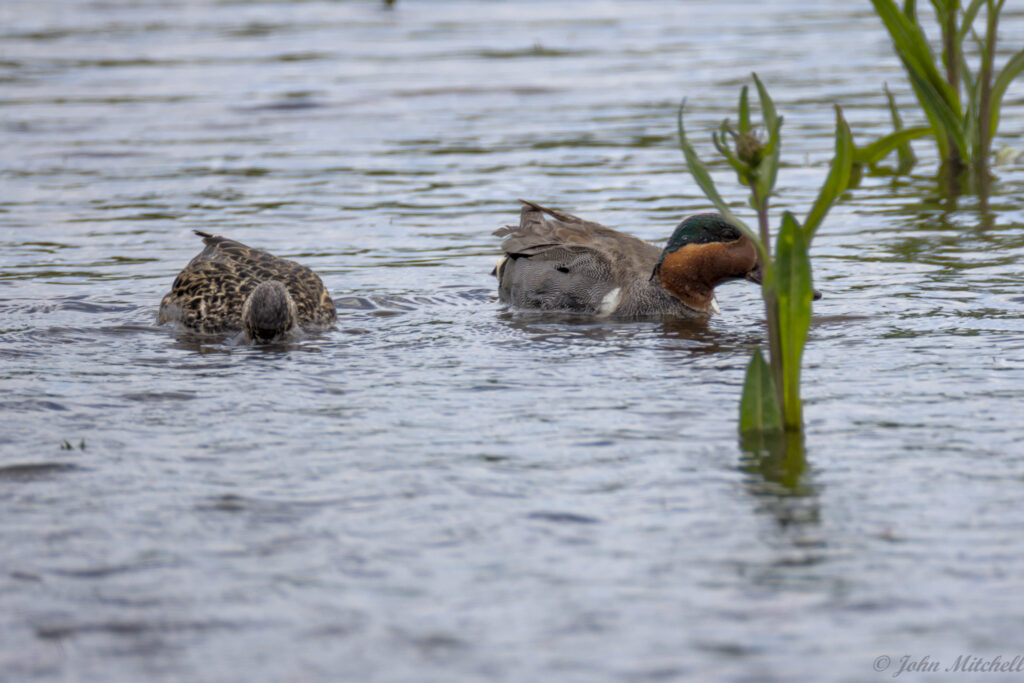
Oddly, the camera seems to do fine with focusing for video.
This was enough pictures for test three, so we started back. It was not too late in the day, so we drove out the East Entrance Road for a ways. We ran into a substantial Bear Jam. The ranger said that two Grizzly Bears were mating on the beach. About 100 people and 200 Canada Geese were watching. We decided to pass up this once in a lifetime opportunity for the sake of decency. Or, so John thought.
We drove up to Overlook Butte to see if anything was there. While John was testing his camera focus, Kate pulled out the spotting scope to peek at the bears. She claims that she was just looking at the people, but she has videos of the bears chasing each other. Kind of suspicious …
There was not a lot up on the overlook, and the attempt to take pictures of a small grey bird utterly failed. This might be due to it being a grey bird on a grey tree – not enough contrast. John missed a good picture of Mountain Bluebirds hovering in the strong wind because the camera would not focus on them. He did get a decent picture of a perched Mountain Bluebird and some flowers.
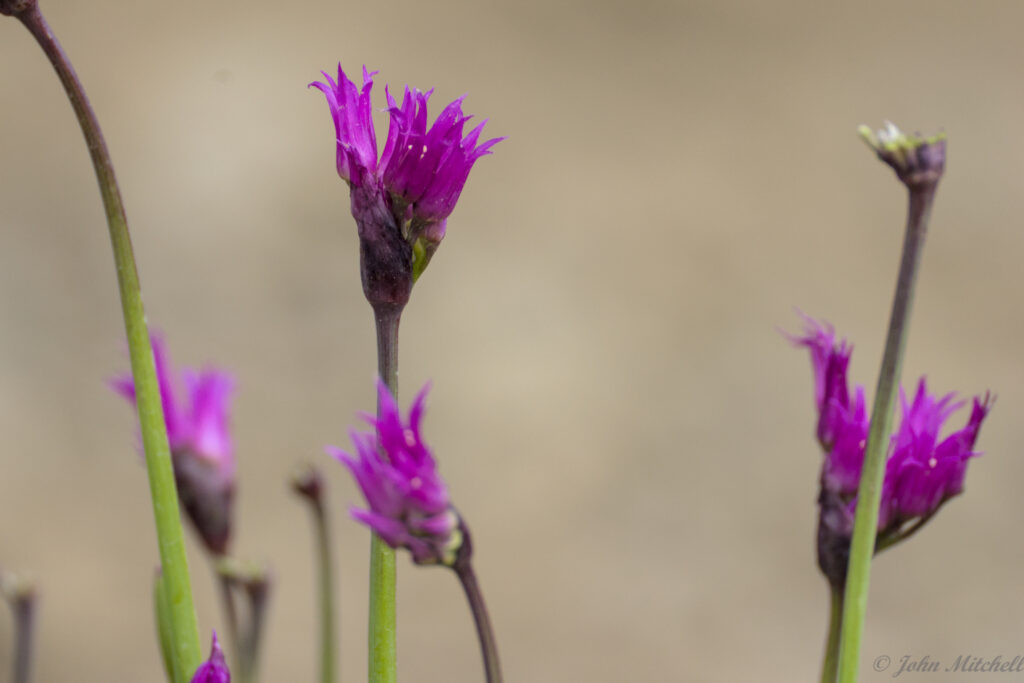
One of the Mountain Bluebird photos has super sharp focus on the bird’s eye. The other is just good.
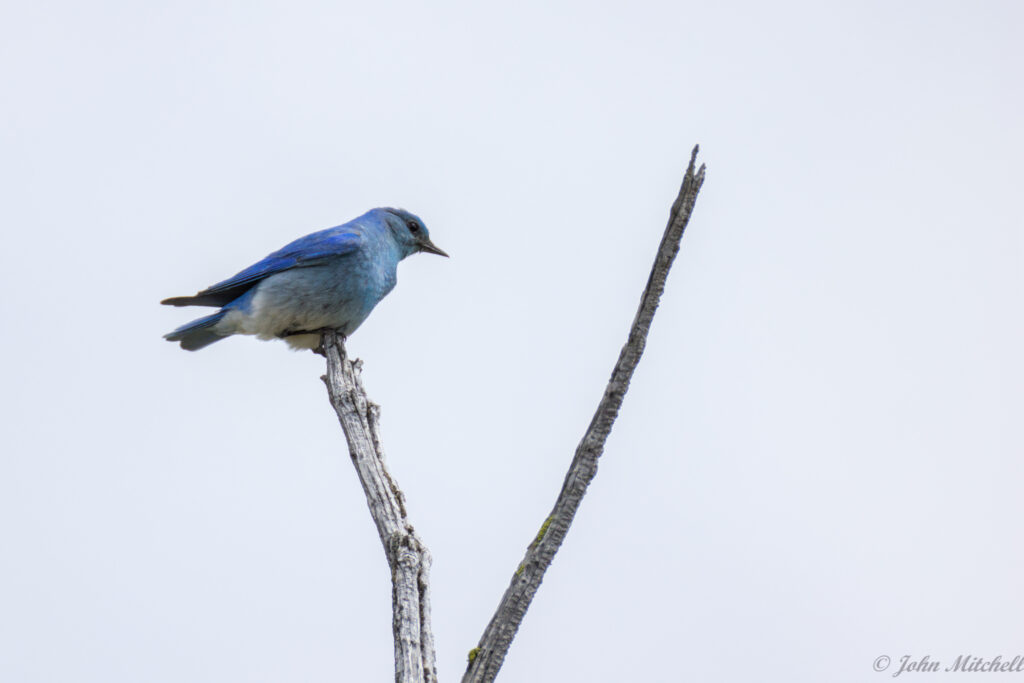
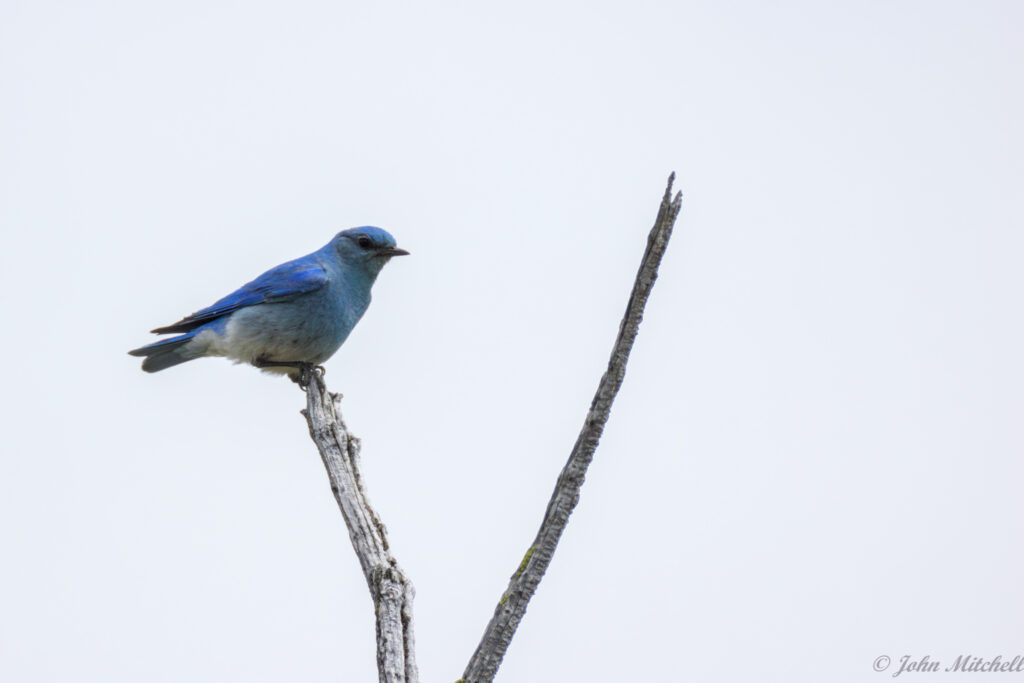
Here is a picture of a flower that is about 15 feet away using the lens at 200mm and 800mm. The 800m lens is approximately 16x magnification, and the view finder can give 5x and 10x magnification. The resulting image can be 0.2x, 1x, or 2x the size of the spotting scope, but it has less detail.


As we were about to turn into the Fishing Bridge RV Park, we saw an American White Pelican fly over the trees ahead of us. On the off chance that it landed in the Yellowstone River at Fishing Bridge, we headed to the Fishing Bridge parking lot. As we drove across the bridge, we saw a large white blob. It looked big enough to be a swan, but it was a pelican.
There were two when we arrived. (What did we learn from the pelicans? Nothing is better than a beak for scratching your butt.)

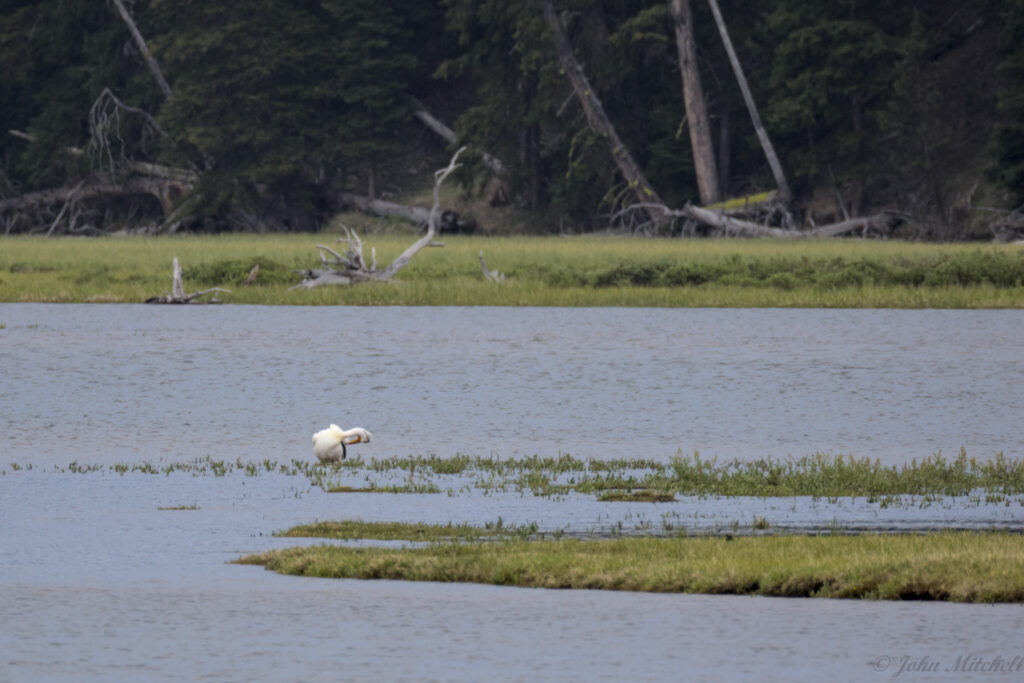
The closer pelican was asleep when we arrived, but it woke up while we were watching.
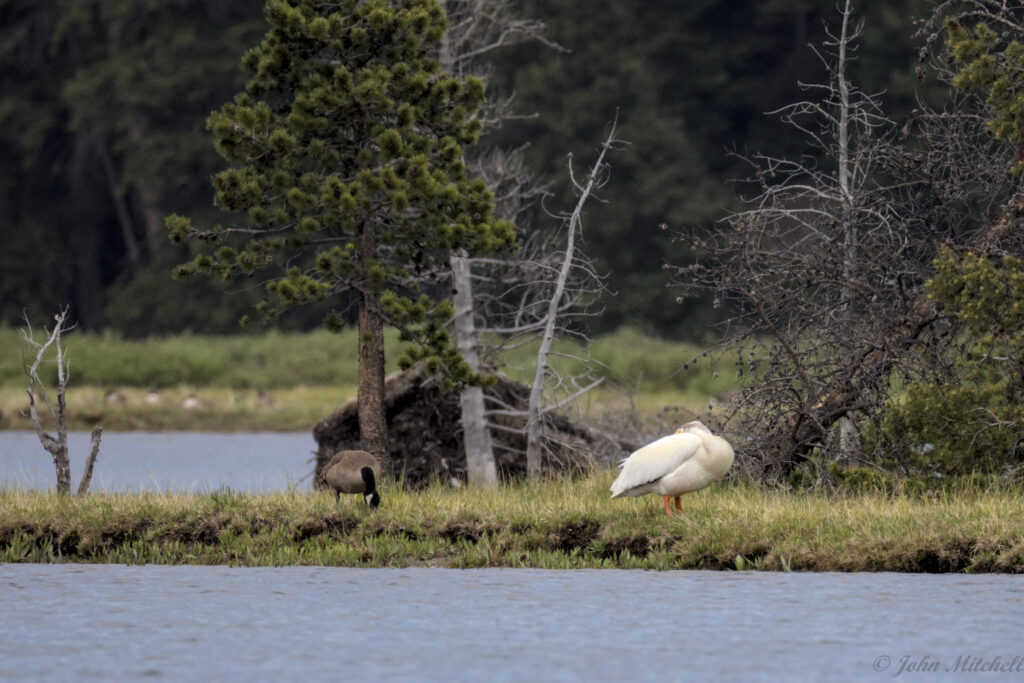
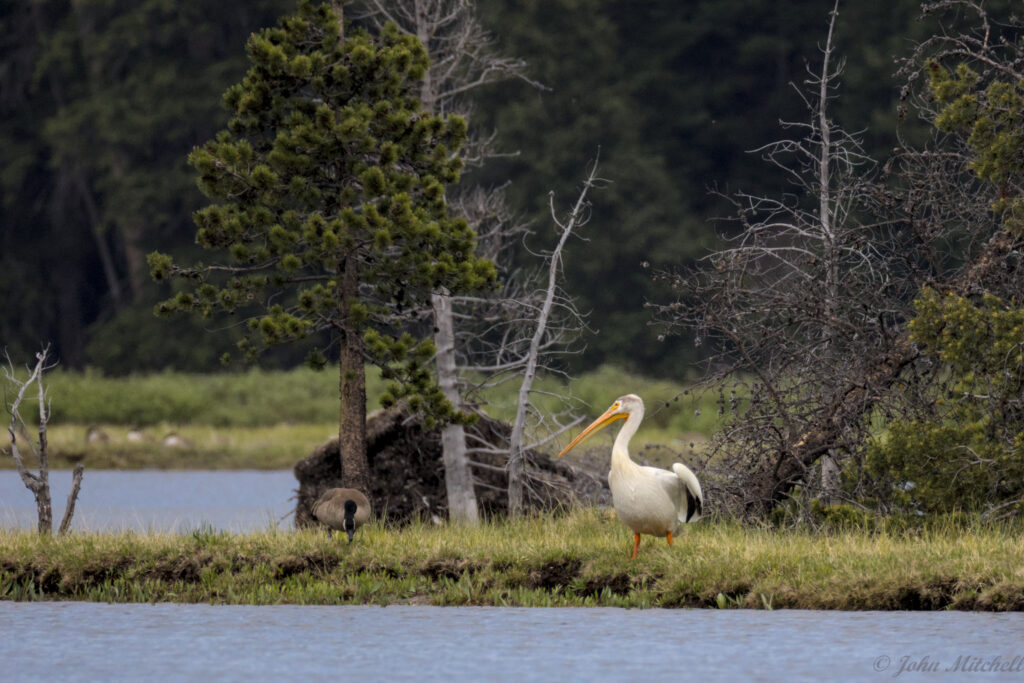
Shortly afterwards, three more pelicans arrived. It looked like one of them just crashed into the others to stop. We are not sure, but they might have had a food fight out in the water.
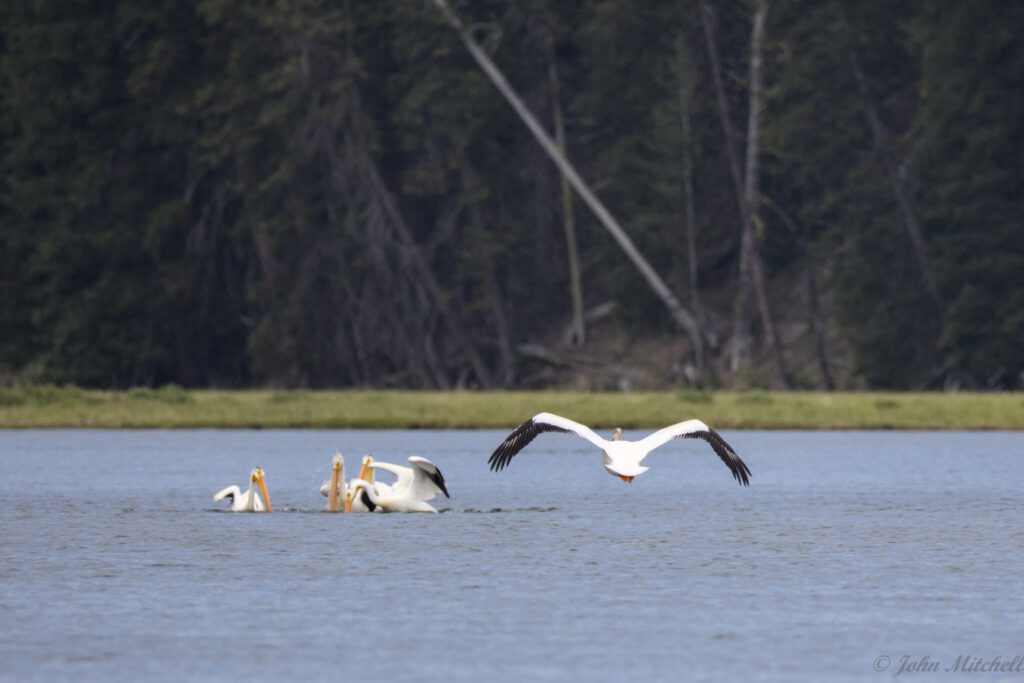
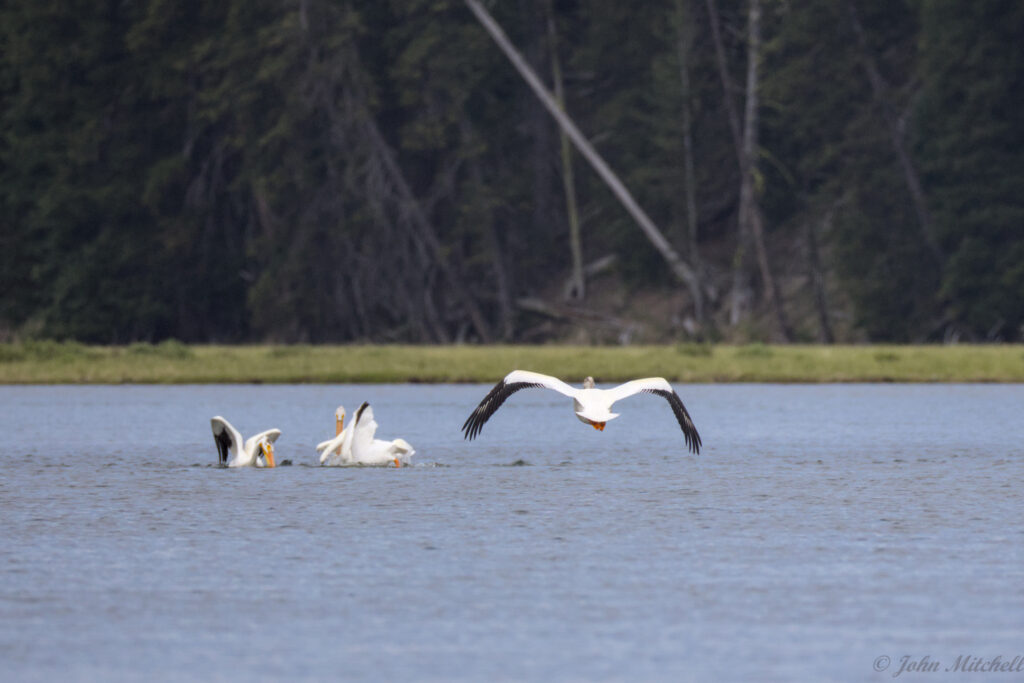
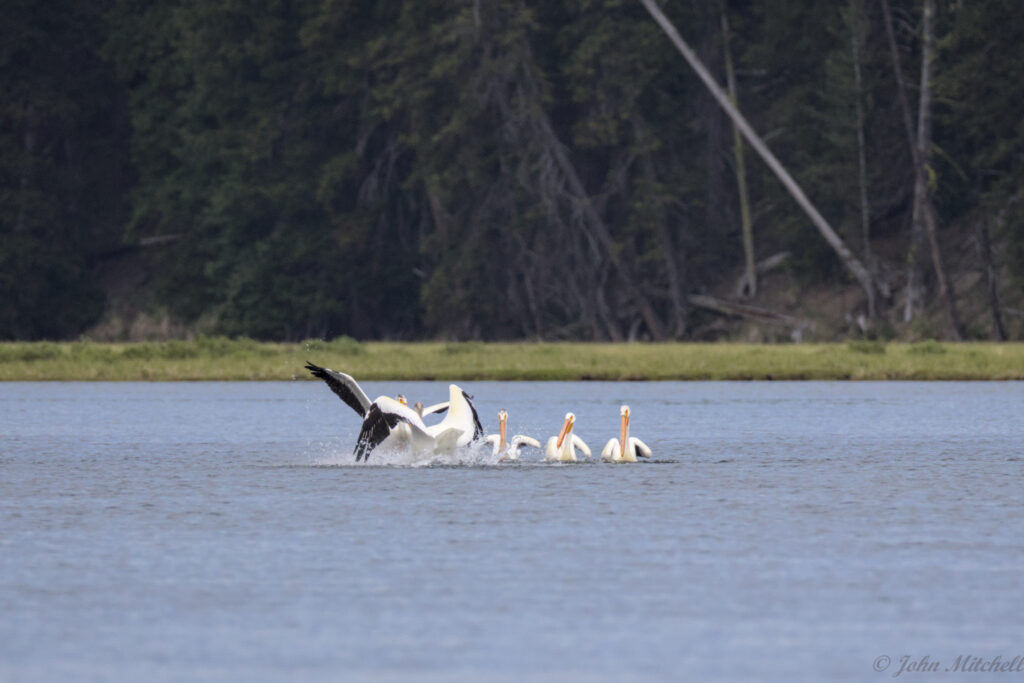
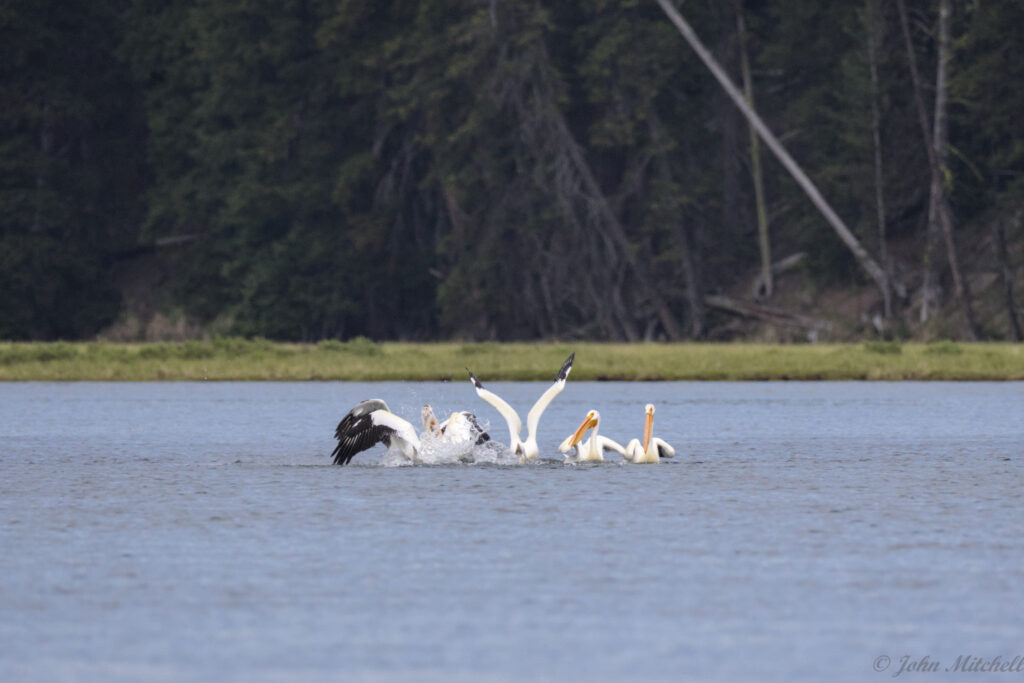
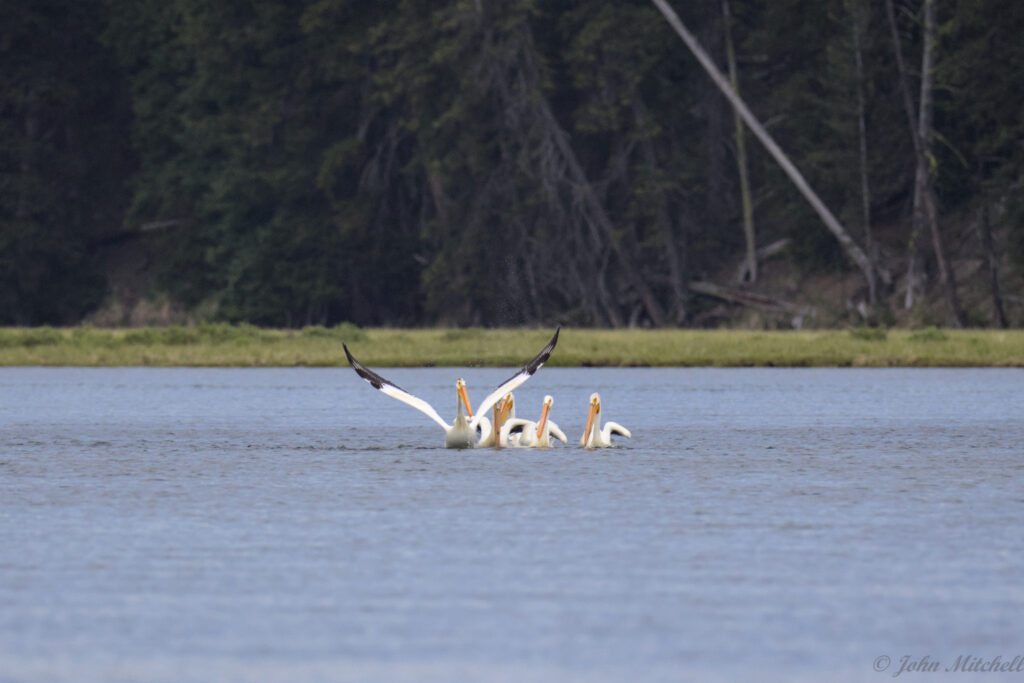
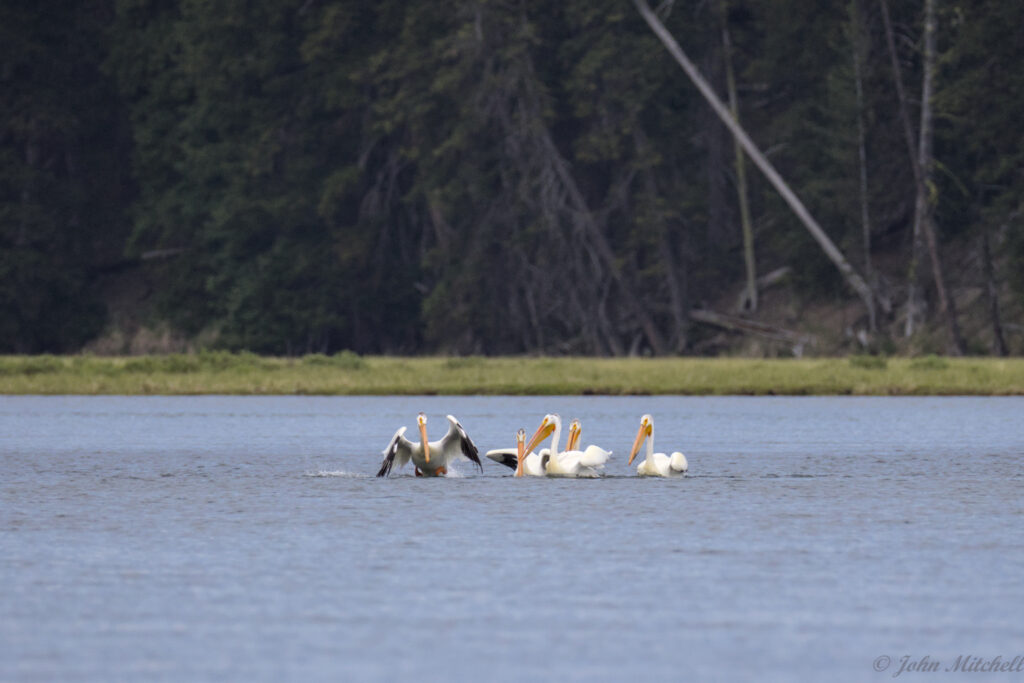
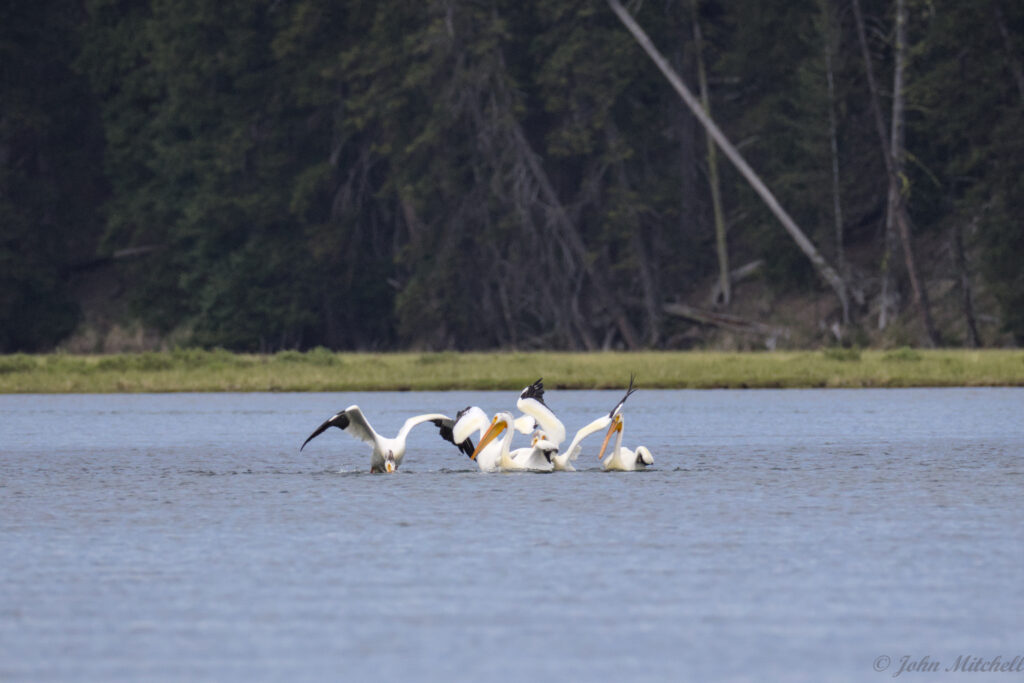
After eating, they practiced their naval maneuvers. The synchronized turn started off okay, but it fell apart at the end.
They wandered over to shore and waddled up on the land.
This picture looks like the Geese and Pelicans are starting a dance party.
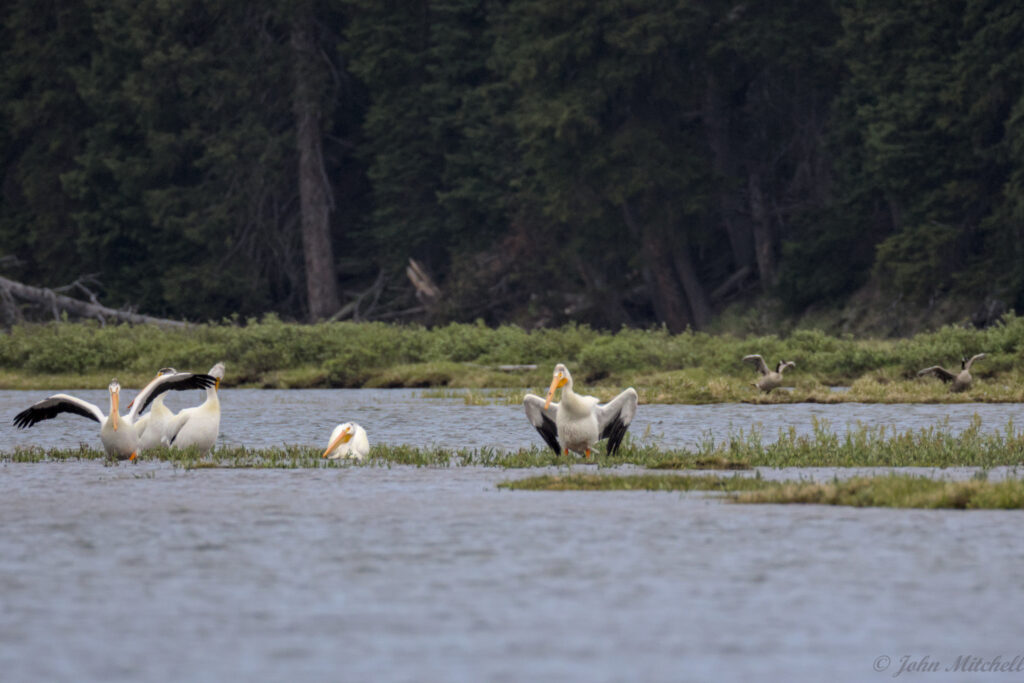
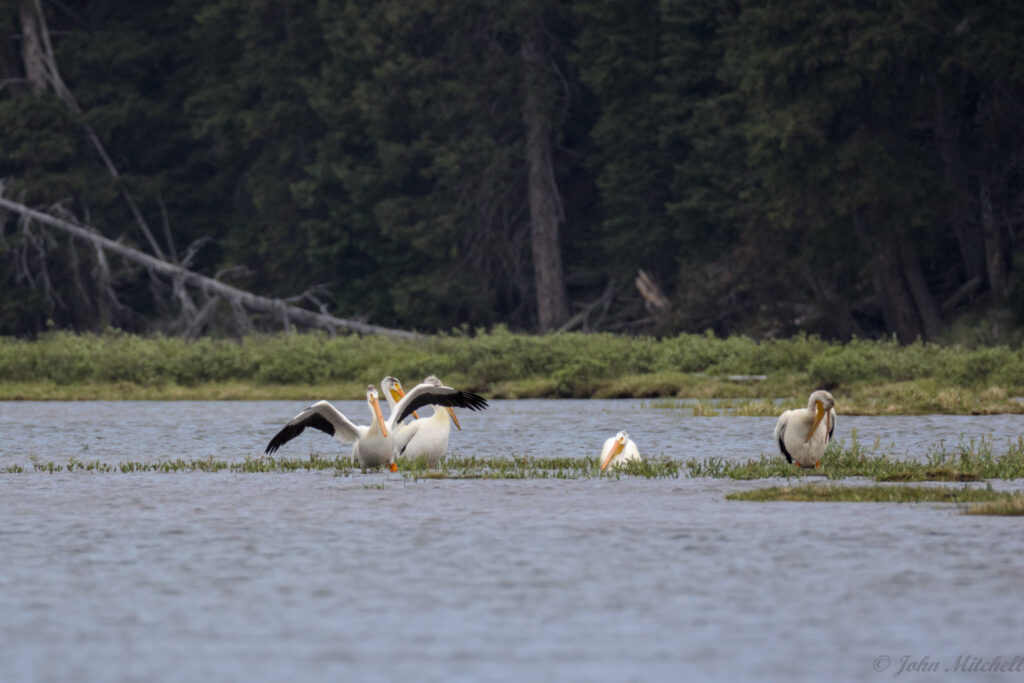
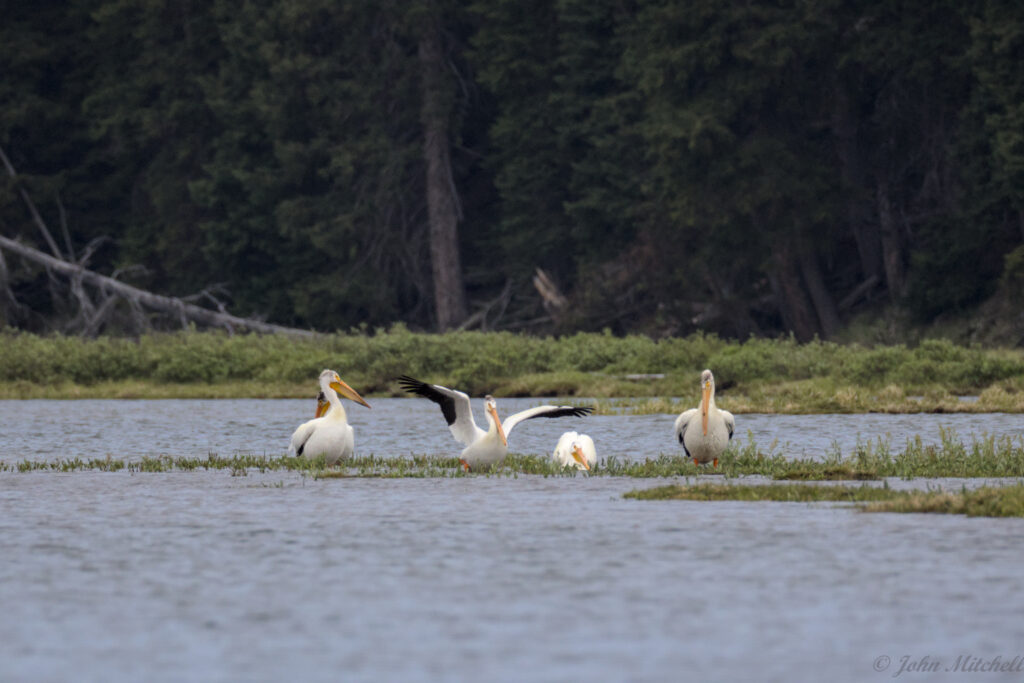
And that was it for the day. The pictures are passable here, but John needs to figure out why some photographs came out okay and others did not. In a few cases, it seems obvious. When the Green-winged Teals were in the weeds, sometimes it focused on the weeds instead of the ducks. Wider AF points might just be a limitation of the mirrorless cameras.
